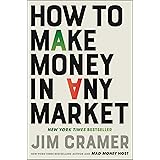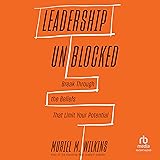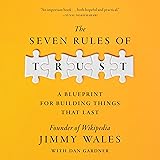With an average daily trading volume of $183 billion, gold remains a powerhouse. This immense figure highlights its significance. It is one of the world’s largest financial assets. The video above offers valuable insights into gold’s role. It features expert perspectives on this precious metal.
Understanding Gold as an Investment
Gold holds a unique position. It functions as both a commodity and a currency. Many investors hold it as a financial asset. Others appreciate it in jewelry form. Gold serves as a way of storing wealth.
Its historical significance is undeniable. Gold has been around for centuries. This shows its enduring power in the market. It symbolizes wealth and status.
Historical Performance of Gold
Gold has seen explosive growth in value. In 2000, inflation-adjusted gold was $460 per ounce. By August 2021, its price reached approximately $1,815 per ounce. This represents a substantial increase. The dollar value of gold has consistently risen.
Even when adjusted for inflation, gold holds its value. The real price today is near 2011 and 1980 highs. This stability is a key characteristic. Gold has maintained its purchasing power through decades.
Gold’s Utility and Demand Drivers
Not all investors love gold. Warren Buffett, for instance, has expressed doubts. He calls gold an asset with no utility. Ben Laidler notes gold pays no income. It offers no dividends like stocks. It has no coupon like bonds. This characteristic is a point of contention.
Despite this, gold has constant demand. It is extremely malleable and easy to work. Gold has a wide variety of real-world applications. These applications ensure ongoing consumption.
Breaking Down Gold Demand
The jewelry sector consumes most gold. This accounts for a significant portion of demand. The investment sector also plays a role. It consumes up to a third or even 40% of gold. This piece tends to be more volatile. The technology component is much smaller. It typically sits around 10% of demand.
This breakdown shows gold’s diverse appeal. It is sought for both aesthetic and functional reasons. Investment demand fluctuates with market sentiment. Industrial uses provide a stable base.
The Power of Central Banks in Gold Demand
Central banks are major gold holders. In 2021, they held over 35,000 metric tons. This represents about one-fifth of all mined gold. The International Monetary Fund (IMF) holds around 2,814 metric tons. This holding is valued at approximately $158.5 billion.
Historically, central banks played a larger role. Until the 1970s, many nations were on the gold standard. Currencies were fixed relative to gold. This necessitated large gold reserves. Central bank buying has picked up recently. In 2018, buying exceeded 650 tons. Central bank holdings are now at their highest since 1999. This demonstrates a persistent appetite for gold.
Gold as a Hedge Against Market Volatility
Many investors use gold to diversify risk. Gold is known to hold its value. It can be a “rainy day asset.” Gold tends to move inversely to the dollar. When the dollar’s value is debased, gold often moves positively.
Historical Examples of Gold’s Hedging Role
The Great Inflation of the 1970s provides an example. The US experienced high inflation from 1970-1979. Gold showed an impressive 35% return from 1973 to 1979. This was a significant gain compared to other commodities.
Gold also performs during economic crises. Following the Great Recession, 2008-2012, gold rose. It went from $1,150 to $1,974 per ounce (inflation-adjusted). During the 2020 pandemic recession, gold reached new highs. Prices hit an all-time high of $2,021 per ounce overnight. It settled above $2,000 in August 2021.
During market corrections, gold can shine. Across the last five major corrections, the S&P 500 dropped about 28% on average. Gold, conversely, rose about 11% on average. Gold proves its value as a liquid asset. It can meet margin calls while retaining value.
The Nuance of Gold’s Hedging Capability
Whether gold is a great hedge is debated. Some experts argue it is not the best inflationary hedge. They believe equities might perform better. However, it still plays a role in portfolios.
Gold’s correlation to inflation has been low. It has yielded mixed returns during high inflationary periods. For example, investors lost 10% from 1980-1984. Annual inflation was 6.5% then. Another 7.6% was lost from 1988-1991. Inflation sat around 4.6% during that time.
Gold can be a strategic hedge. It depends on the type of risk. For systemic risk, gold can be effective. For localized risks, it may not be. Gold held 12-18 months before inflation, and for 12-18 months during inflation, can be a good hedge. Short-term buying may not be effective.
Long-Term Performance: Gold vs. Traditional Assets
As a long-term commodity, gold sometimes falls short. Its returns often lag stocks and bonds. Since 2011, the S&P 500 showed 14.55% annualized returns. A 10-year Treasury note returned 2.57% annually. Gold’s 10-year annualized return was -0.05% for the same period.
Concerns exist about gold’s long-term yield. In a “normalized environment,” gold may not perform as well. This is especially true without major geopolitical or exogenous events. Warren Buffett’s actions underscore this perspective. He invested $562 million in a gold mining company in August 2020. He then exited the position by the end of 2020. This reaffirmed his long-standing investment philosophy.
A small allocation to gold is prudent portfolio management. However, heavy entrenchment is not ideal. This applies if investors seek long-term yields. This aligns with many investment philosophies.
Gold in a Modern Portfolio: Competing Assets
Other commodities now challenge gold’s status. Silver has gained immense popularity. It offers similar macro exposure. Silver also has greater industrial usages. Cryptocurrencies represent a new form of digital asset. They are increasingly seen as a store of value.
Many believe both asset classes can coexist. The market is dynamic and evolving. Gold’s influence is not disappearing soon. It remains a crucial component in diverse portfolios. Investors must decide how much gold to hold.
Gold prices are expected to remain elevated. Further upside risk is possible in the near term. Then, gold prices might trend lower. Evaluating gold as an investment requires understanding these dynamics.











